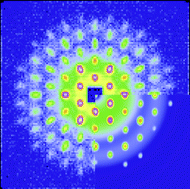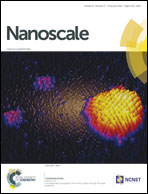Defect accommodation in nanostructured soft crystals†
Abstract
A detailed analysis of the structure of lyotropic micellar FCC soft crystals was performed by scanning small-angle neutron scattering. Soft crystals have a large number of structural defects, leading to characteristic features in the scattering patterns such as secondary Bragg peaks, diffuse scattering lines, and paracrystalline distortions. We find that the presence of a large number of defects locally breaks the three-dimensional symmetry of the crystal, leading to weakly correlated assemblies of stacked {111} layers. Positional correlations of micelles in different layers are very short ranged, with correlation lengths corresponding to only a few layers. Within the layers, in-plane positional correlations are somewhat longer ranged, but still corresponding to only a few unit cells. Depending on the polydispersity, soft crystals accommodate defects to form mesocrystals of iso-oriented mosaic domains, or paracrystals. The soft layer structures already show characteristic features of two-dimensional systems, exhibiting short-range positional order and longer-ranged orientational order, with similarities to hexatic and recently observed soft quasicrystalline structures. The study shows that defects can be differently accommodated in soft crystals, thereby strongly affecting local and macroscopic positional and orientational order.


 Please wait while we load your content...
Please wait while we load your content...